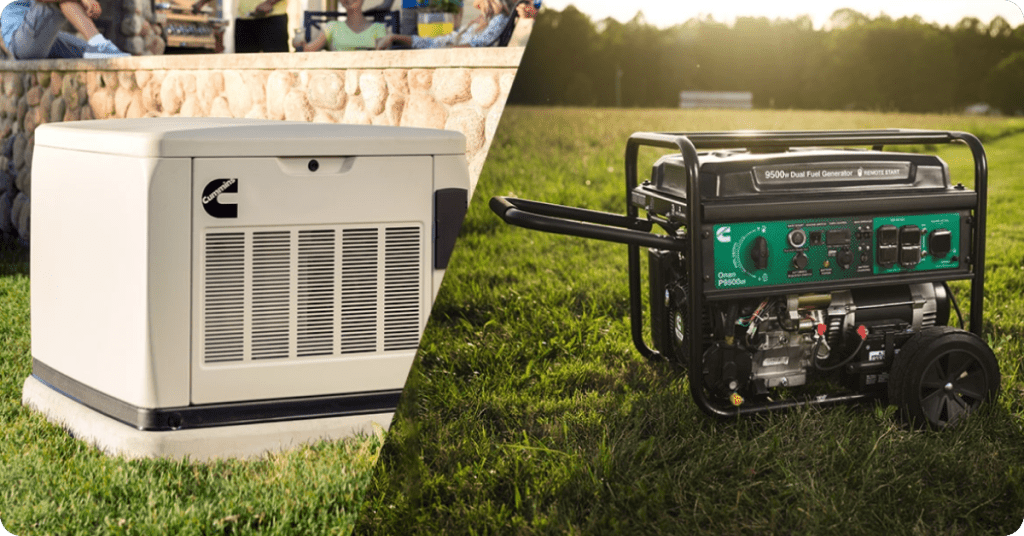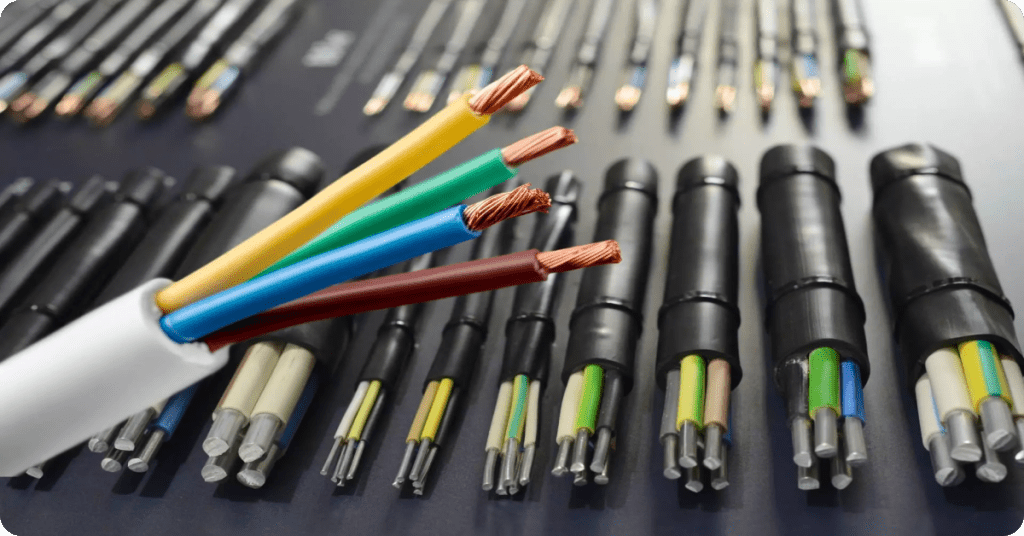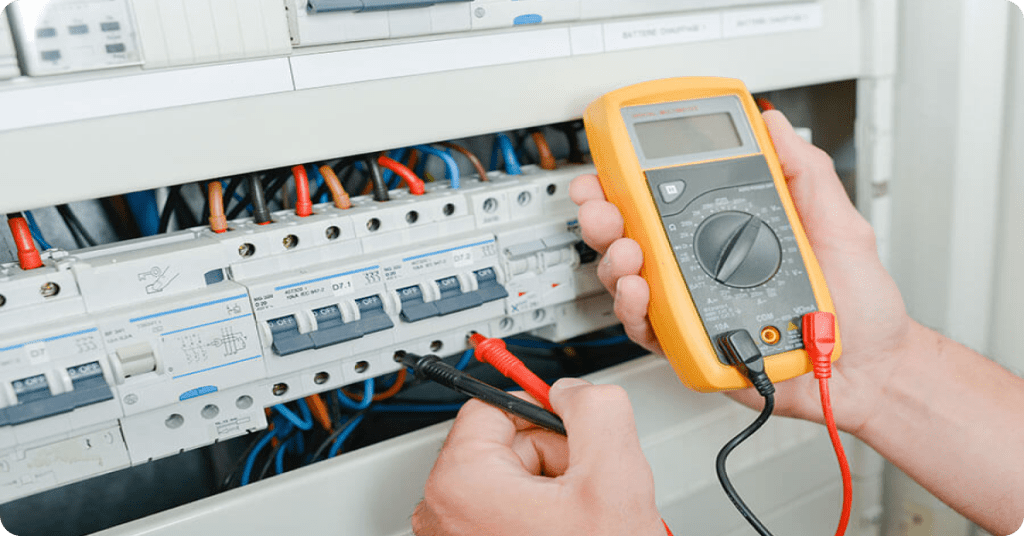Generators are a great addition to any home. Whole house generators today come in the form of automatic standby generators and portable generators. In this article, we’ll cover the differences between automatic and portable generators, what each can do, and the pros and cons of each. I’ll have links posted to more in depth articles about the installation process of each.
If you’re on the fence about purchasing a generator, keep this in mind; you would rather have it and not need it than need it and not have it. A generator will be very difficult to purchase right before or during a major storm, black out, hurricane, or similar event in which power may be out for a few days. Home improvement/hardware stores/internet retailers quickly sell out of not only generators but the cords, inlets, and other materials needed to connect a generator to an electrical panel to power the home.
In the event of a large outage, licensed electricians will prioritize servicing their existing customers who have damaged services, surge related issues, generator troubles, etc. and may not have time or be willing to take on a new customer wanting a generator. Power related storms equal pandemonium in the electrical industry from the utility companies to electricians to equipment manufacturers. Ask me how I know.
Why do you need a generator?
If you’re considering getting any type of generator, I’ll try to persuade you with some real life examples. It’s winter time, a noreaster just passed through. The temperature is going to be 0-20 degrees F for the next week and there is no power. You can build a fire and bundle up, but to avoid pipes from freezing, you need a generator to run your heating system. February 2021, Texas: Over 246 lives were lost, most from hypothermia (freezing to death) because of the cold and a power outage.
It’s summer time, and extremely hot. The temperature is going to be 90-100 degrees F for the next week and the high temperatures caused a blackout amongst the utility companies. The food in your refrigerator will need to be thrown out, you’ll have no lights, and will be sleeping with no air conditioning. Northeast Blackout of 2003: Over 55 million people were without power for days.
It’s late summer/early fall, hurricane season is in full swing tearing down trees and flooding streets. This happens every single year. In our modern society, we are so accustomed to power that we will be severely inconvenienced without it. The price of even one of the more costly Automatic Standby units (as you’ll soon see), are easily justified when you consider the possibility of losing food in your freezer and refrigerator, possible pipes freezing and bursting, and enduring hot and humid conditions with no air conditioning.
Automatic Standby vs Portable Generators
There are two types of generators that are typically installed in residential and commercial applications.
Automatic Standby Generator:
An automatic standby generator is connected to your electrical system via an automatic transfer switch (ATS) in such a way that it will go on any time your home loses power. They are typically sized to power the whole home minus large unnecessary loads like a spa. It takes mere seconds for the standby unit to turn on and repower the entire home after a power loss. Automatic standby generators cost more for the unit as well as for installation because they are more complex and typically larger. With an automatic standby generator there is nothing you need to do as a homeowner when power goes out. Just how much does an automatic standby generator cost? As of 2022, the price of a 22KW Generac Generator (that will power the entirety of most homes), costs $6000 (prices have been rising steadily over the past year). Electrical Installation is typically between $2500-4000, and the plumbing for natural gas is usually between $2000-4000. There are MANY variables involved, for an in depth look at the installation of an automatic standby generator and transfer switch, check out Automatic Standby Generators in Detail.
Portable Emergency Generator:
A portable emergency generator is exactly what it sounds like, but don’t let the name fool you, these can be just as large as automatic standby generators and can power an entire house. With a portable generator, you need to manually bring the unit outside, plug it in, start it, and then turn your breakers back on via an interlock device or a manual transfer switch. You will also have to fill it with gasoline and monitor the level and refill when needed. There are some portable units that can be powered with natural gas or propane creating a sort of hybrid generator. With a portable generator your whole house can be repowered but it involves a small amount of work on your part. These generators as well as the installation are typically much less expensive than an automatic unit. The installation consists of the inlet box, circuit to the electrical panel, and interlock device or manual transfer switch. Portable generator interlock installations start at less than $1000 and a decent generator can be had for less than $1000 as well. For a much more comprehensive article about portable generators see Portable Emergency Generators In Detail.
Automatic Standby Generator and Transfer Switch:
Here are some pictures to clarify the differences. The first picture is a typical install close to both the electrical meter and the gas meter. They are on the same side of the house and relatively close to each other, this is an ideal scenario for an inexpensive installation.
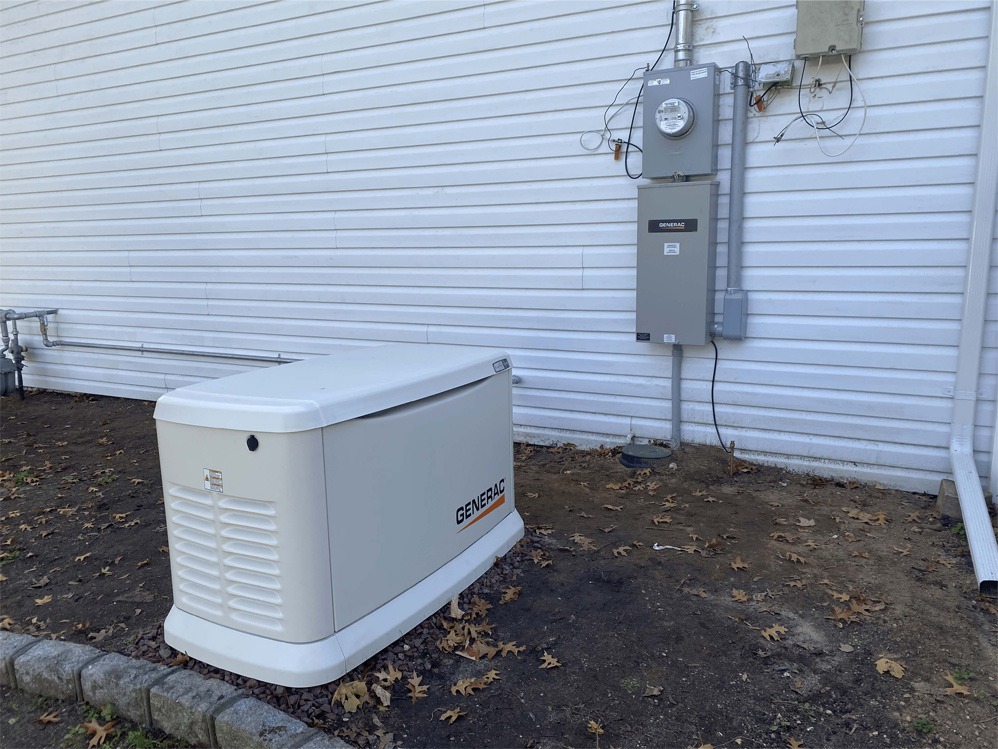
Portable Generator:
These two pictures are of a portable generator setup. A portable generator typically looks much different from a standby generator. The next picture is of the interlock device that is installed in most applications today allowing you to power more circuits (depending on the size of the generator) than a traditional manual transfer switch.
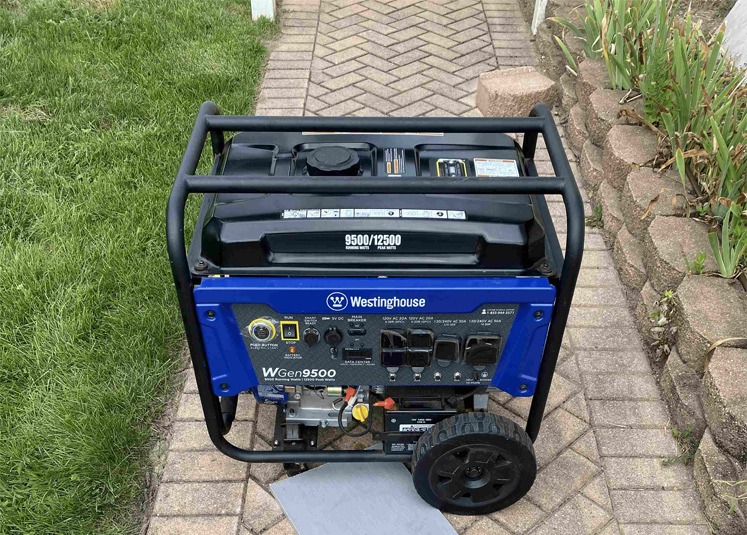
Interlock Device for portable generator whole house connection:
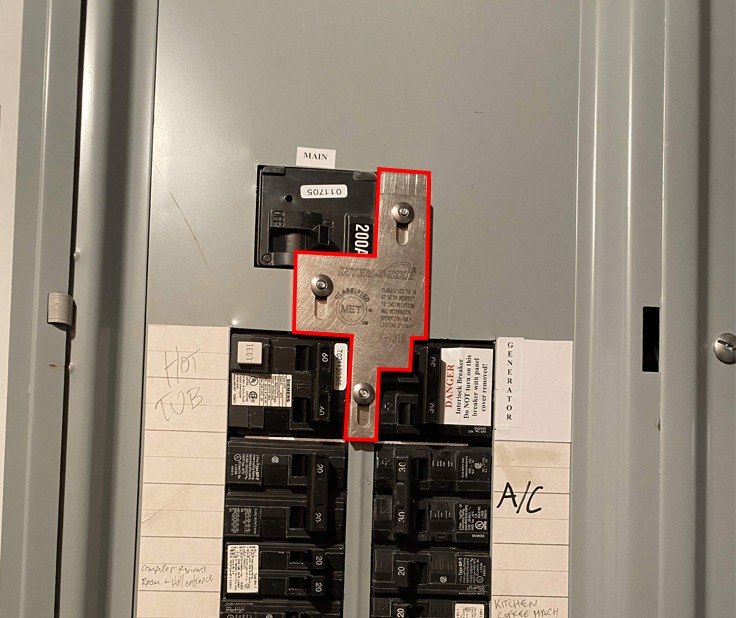
It is my hope that the above information will help those who are torn between purchasing an automatic standby generator and a portable generator. As always ensure you have a licensed electrician and licensed plumber doing the installations. We have a comprehensive list of Electricians that specialize in generator installs in our Electrical Registry. If you have any questions feel free to leave a comment and I’ll respond as best I can as quickly as I can. Thanks again for reading.
Price ranges for whole house generators with installation typically range from about $9700 on the lower end for a basic installation and can exceed $20,000 for a more involved installation. Keep in mind the size of the generator being installed as well as the complexity of the install will be major determining factors with price.
A portable generator can absolutely power an entire house. New interlock systems are designed to allow the operation of every breaker in your electrical panel. The constraining factor here is the size of the generator and the size of the installed generator circuit.

